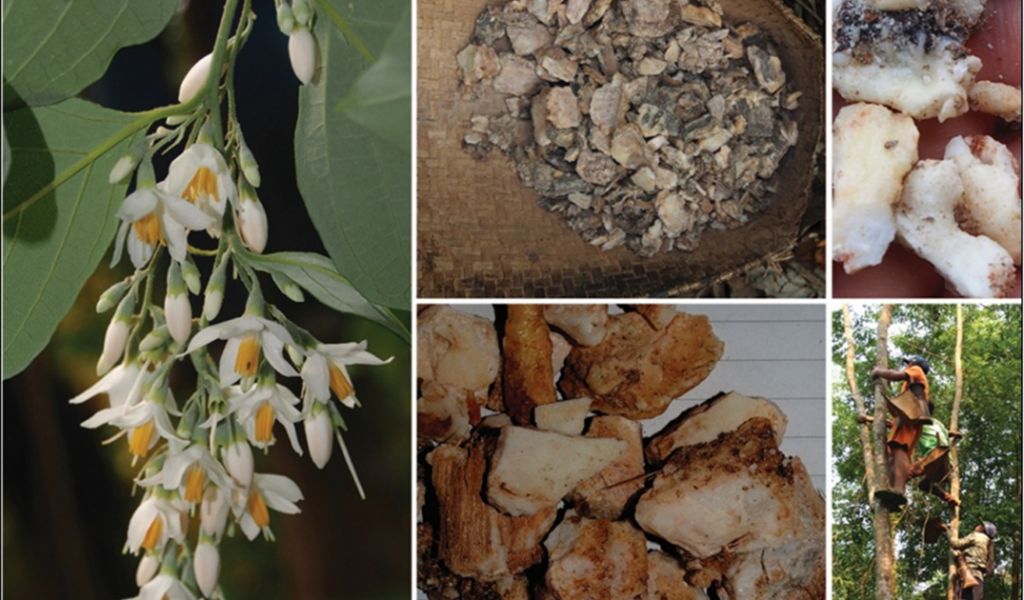ຢາງຫອມຍານລາວ / Lao Benzoin
APA 6th ed. ຢາງຫອມຍານລາວ / Lao Benzoin. (2021, October 15). Retrieved from https://www.phakhaolao.la/kb/0000060
MLA 8th ed. ຢາງຫອມຍານລາວ / Lao Benzoin. Pha Khao Lao, 15 October 2021, https://www.phakhaolao.la/kb/0000060.
Chicago 17th ed. Pha Khao Lao. 2021. "ຢາງຫອມຍານລາວ / Lao Benzoin." Published October 15, 2021. https://www.phakhaolao.la/kb/0000060.

Styrax hypoglaucus Perkins
Styrax macrothyrsus Perkins
Styrax subniveus Merr. & Chun
Thai: kam yan, khwe, sat saming, sphobo, sadan.
Vietnamese: bo de, cay canb kien trang, cay an tuc huong, ko nyan.
English: Benzoin tree, gum resin, gum Benjamin.
Yarn (the resin of S. tonkinensis) is a medium-sized deciduous tree, 15–20 m high with a DBH of 22–28 cm. Its outer bark is rough and grey with horizontal cracks, while the inner bark is thin and light maroon. The oval leaves are 4–9 cm wide and 15–20 cm long, with a pale-green upper blade and a lower blade with whitish hairs. The inflorescences are clusters of white sweet-smelling flower, 15–20 cm long. It sometimes develops yellow-orange galls, 4 cm long and 0.5 cm wide on the branches. The oval fruit, 1–1.2 cm long and 5–7 mm wide, is split into three parts. The seeds are coffee-cream colored capsules, 3–4 mm long with a diameter of 2–3 mm.
Lao Benzoin has gained popularity on a global level as it’s documentary in French medical dictionaries as benzoin du Laos. Benzoin is a sweetly fragranced oleoresin extracted from the tree stem as a component in the incense burned at rituals or ceremonial activities. Abroad it is mainly used in high-class perfumes and balms as preservation in food processing, in tobacco products and in medicines. Aromatherapy makes use of the fragrant oils to calm and warm the body. It is also used for the protection or disinfection of wounds and to provide relief from coughs, colds or bronchitis, it increases the flow of urine and prevents the formation of gas in the body. In Indonesia benzoin is still use in porcelain production.
